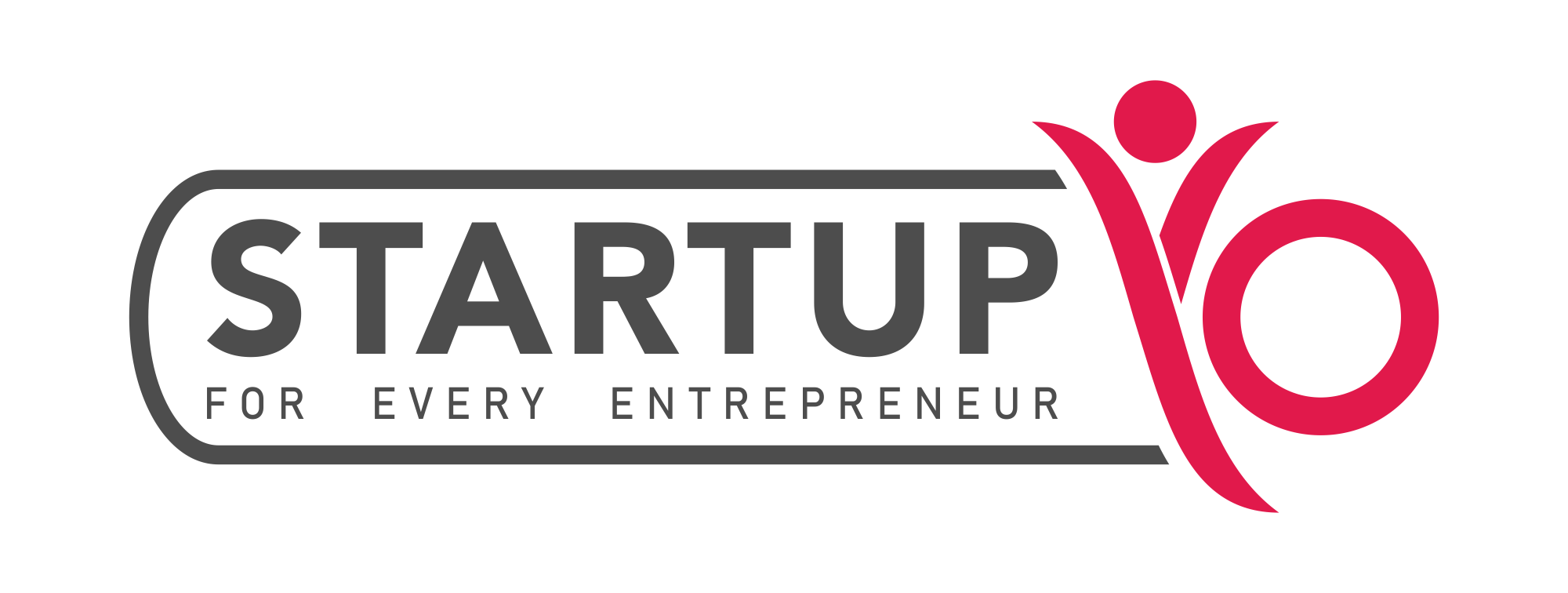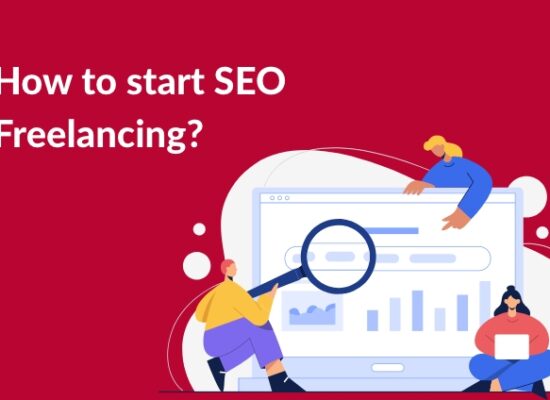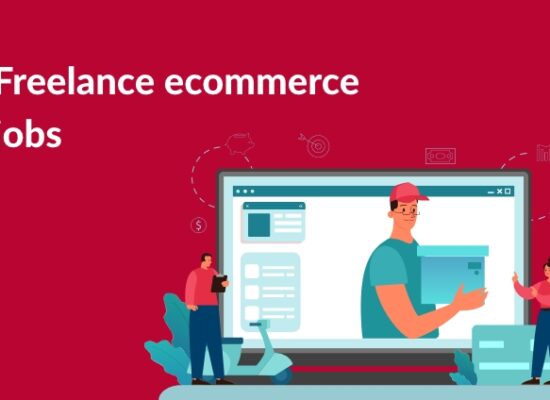
Do you usually think of hiring a professional web designer when you want to establish your business or merely need a website for your project?
The problem is that paying someone full-time for that may get very costly, particularly if you’re just getting started or if you simply need your website to be worked on occasionally.
You don’t need to think about it anymore, as we’re here to help you get through it. In this guide, we are going to make you understand the fundamentals of how to find the best freelancer website designers in a comprehensive manner.
Read More : Freelance Software Engineer Jobs
Why to find a website designer?
If you’re a small company owner and want a website for your shop. You can find someone with specialized expertise within your budget and without the overhead of a full-time staff by employing a freelancer.
Anyone who wants to improve their current website or create a professional online presence must find a website designer. To build visually beautiful, functional, and user-friendly websites, a talented website designer is required. A website designer combines technical proficiency, understanding in user experience optimization, and design principles.
Individuals and companies may make sure that their websites efficiently accomplish their goals, engage visitors, and reflect their brand identity by employing a website designer. Working with a website designer, the process produces excellent results that are customised to the unique requirements and objectives of the project, whether it be building a brand-new website from the ground up, redesigning an old one, or optimising for mobile responsiveness.
Freelancer vs Full-time
If you’re finding a website designer for your startup. Then you will have to commit to a set salary, benefits, and possibly office space if you decide to hire a full-time professional. On the other hand, you can pay for the precise hours spent on the job without making long-term commitments if you decide to hire a freelancer.
This adaptability helps your startup avoid the overhead costs of a full-time employee and scale resources in accordance with project demands, which is especially helpful in the early stages when finances may be limited.
Depending on the particular requirements of your project, using a freelancer website designer has various benefits which are here
| Freelancers | Full-time |
| Regarding project schedules, availability, and workload, freelancers provide flexibility. You don’t have to commit to recruiting full-time staff in order to handle temporary or one-time projects. | Full-time employees don’t have much flexibility. They are hired by a company on a permanent basis and typically work a set number of hours per week. |
| For startups or small businesses with tight resources, hiring a freelancer may be more affordable than hiring a full-time website designer. Since freelancers usually bill by the hour or project, you can manage expenses according to the size and scope of your work. | Incase of full-time employees, you have to pay them a fixed salary irrespective of the scope of your project. |
| Platforms for freelance work give users access to a worldwide talent pool of knowledgeable website designers. To select the ideal designer for your project, you can choose from a wide variety of designers with different backgrounds, experiences, and portfolios. | While hiring full-time employees, you can’t get individuals from all around the world. You have to stick to some geographical locations. |
| Employing a freelancer gives you the freedom to use their skills for individual projects without any obligations or long-term commitments beyond the current project’s parameters. Businesses with varying workloads or short-term project needs can benefit from this flexibility. | Employing an individual on a full-time basis doesn’t give you much freedom. You won’t be able to leave the person in case your project is over. |
| Unlike the hiring process for full-time workers, freelancers can frequently get started on your project right away, providing quick turnaround times. For tasks with short deadlines or urgent needs, this can be helpful. | Hiring full-time employees is a long process. You have to go through a number of rounds to choose them. It usually continues for months which isn’t good for your company. |
| Employing a freelancer saves you the overhead expenses of hiring a full-time employee including equipment, office space, and salary. Your company may be able to save money as a consequence. | Hiring a full-time employee involves expenses such as equipment, office space, and salary. |
How much does it cost to hire a web designer?
The cost of hiring a website designer can vary greatly based on a number of criteria including industry demand, project complexity, location, experience, and competence.
Hourly Rate: The hourly rate that freelance website designers often charge for their services can be up to 15$ to 30$ per hour or more. Prices can change according to the designer’s location, experience level, and skill set.
Fixed-Price Projects: Based on the project’s scope, some freelancers would rather work on fixed-price projects, where they offer a cost estimate for the full project. Based on the project’s complexity, fixed-price contracts can cost anything from a few hundred to several thousand dollars.
When selecting a website designer, it’s important to take into account the total value and return on investment instead of just the initial cost. It’s important to consider other aspects as well like the designer’s portfolio, communication style, talent level, and capacity to provide excellent work on schedule.
Read More : Upwork vs Fiverr: Picking the Best Platform for You
10 Steps to Hire Freelance Website Designers
If you’re looking forward to creating a website for your startup to showcase your products and allow customers to place orders online. You can go about hiring a website designer wisely by following below steps
1. Specify What You Need
Establish the scope, objectives, budget, schedule, and budget of your project in detail first. Ascertain if you require a designer for continuous work or a one-time assignment.
2. Research and Shortlist
Look into design-focused communities like Dribble or Behance, as well as freelance marketplaces like Upwork, Freelancer, or Fiverr. Make a shortlist of possible applicants based on their qualifications, portfolios, client testimonials, and experience.
3. Examine Portfolios
Spend some time evaluating the calibre and aesthetic of each designer’s work by looking through their portfolio.
4. Verify References and Reviews
To determine the repute, dependability, and professionalism of the designer, get in touch with past customers or pursue reviews.
5. Assess Skills and Expertise
Examine the designer’s abilities in areas pertinent to your project, such as front-end development, graphic design, web design, and software design and coding language competency.
6. Express Your Expectations
Make sure the designer knows exactly what you want from the project and what your goals are. Give them thorough instructions, specifications, and any pertinent information to make sure they understand exactly what you require.
7. Talk About Timeline and Budget
Be open and honest with the designer regarding the project’s timeline, budget, and milestones.
8. Evaluate Communication and Collaboration
Consider the designer’s ability to communicate, responsiveness, and cooperative spirit. A successful relationship depends on effective communication, so make sure you feel at ease sharing ideas and offering criticism.
9. Discuss Terms and Contracts
After choosing a designer, discuss the project’s terms such as the ownership rights, modifications policy, and payment schedule. To safeguard the interests of both parties, put these terms in writing in a clear and thorough contract.
10. Offer constructive criticism and assistance
Throughout the project, offer the designer constructive criticism and assistance to enable them to produce their finest work. To maintain a successful and seamless partnership, keep lines of communication open and swiftly resolve any concerns or issues that arise.
By following these steps, you can effectively hire a website designer to create a professional and functional website, enabling you to attract more customers and grow your business online.
Read More : 7 Best Websites to get remote freelance jobs
Challenges in Hiring

Hiring freelancers to create websites can present a number of difficulties such as
- It can be difficult to make sure the freelancer’s work lives up to your expectations, particularly if you’re not an expert in website designing.
- Due to varying obligations and objectives, freelancers may find it challenging to regularly fulfil deadlines.
- There are chances of misinterpreting information, time zone difficulties, and language problems.
- To prevent future issues, it is crucial to clarify ownership rights, intellectual property, and confidentiality agreements up front.
- It can be difficult to confirm a freelancer’s experience and skill set because their portfolios don’t always fairly represent their abilities.
- While using freelancers can save money, less expensive solutions can not provide the necessary quality or dependability sometimes.
- It can be difficult to short list freelancers who are available when you need them, particularly if your project has a strict deadline or timeframe.
In order to overcome these obstacles, careful screening, open lines of communication and precise project specifications to reduce risks are all necessary.
Read More : How to make money on Fiverr?
Managing and Paying Freelancers for Website Designing
Managing and paying freelancers to create websites can occasionally feel like crossing unknown waters. You made the decision to work with a freelance website designer to update the appearance and functioning of your website, now you must be able to effectively manage everything.
First things first, the project scope needs to be defined. You must list down your suggestions for the new website design, mentioning the features you would want to see as well as an approximate completion date.
You must look through reviews and portfolios to choose a freelancer whose work fits your vision. After a few conversations, you both agree on the project parameters. You should prepare a contract that includes the specifics of the job, the payment plan, and any other pertinent provisions.
Now that the deal is in place, give access to your website, branding materials, and any other resources the freelancer might require. You keep lines of communication open throughout the project, following up frequently to offer suggestions and resolve any issues they may be having.
You divide the project into milestones as it moves along, and payments are linked to the accomplishment of each milestone. For example, you release the first payment after the homepage design is finalised. This guarantees that you are receiving the high-quality work that you have paid for and keeps you and the freelancer engaged.
When it comes time to pay, you must choose a secure payment mechanism (like PayPal or direct bank transfer) that has been agreed upon by both parties. You make sure to swiftly deliver money to the freelancer in recognition of their hard work and dedication upon reaching each milestone.
When the project is finally over, you give your thoughts on the finished products and convey your appreciation for a job well done. You maintain contact with the freelancer in case you want to work together in the future and you like their professionalism.
Top places to find web designers
Some of the best places to look for web designers are
1. Freelance websites such as Upwork, Freelancer, and Fiverr, where you may view designer profiles and portfolios and make direct hires.
2. You can interact with and view the work of talented designers on design communities and forums like Dribbble, Behance, and Designer Hangout.
3. Website design-focused studios and companies. Online directories like Clutch or DesignRush are good places to look for them.
4. Social networking sites where designers may network with possible customers and exhibit their work, such as Facebook, Twitter, and LinkedIn.
5. Local conferences, networking events, and meetups for design where you may speak with designers face-to-face about the details of your project.
6. Recommendations from friends, coworkers, or other entrepreneurs who have already collaborated with designers and can suggest a trustworthy individual.
Choose the best freelance web designer
Selecting the best web designer necessitates carefully weighing a number of variables. Through the use of freelance platforms, portfolio evaluation, and efficient contact, you can find talented designers who fit the requirements of your project. To ensure you pick the right choice, don’t forget to consider their qualifications, experience, and prior work.
Successful cooperation and exceptional outcomes will ultimately emerge from clear communication and mutual understanding throughout the project. By keeping these tips in mind, you may search for the ideal freelance web designer with confidence for your upcoming project.
FAQ’s
What qualities should a freelance website designer possess?
A freelancer with expertise in web design, graphic design, front-end development with JavaScript, HTML, CSS, and potentially Illustrator, as well as familiarity with responsive design principles is very important.
How can I find a freelance web designer?
Freelance websites designers can be found by searching on freelance marketplaces such as Fiverr, Freelancer, or Upwork. Additionally, you can search for designers on social media sites or in design-focused forums like Behance or Dribbble.
How can I be sure to communicate effectively with a freelance web designer?
Establish clear guidelines, give thorough project briefs, and arrange frequent check-ins. Make effective use of project management platforms such as Asana or Trello to monitor developments and communicate comments.
How can I check the calibre of a web designer’s work?
Look through their portfolio to examine samples of their prior work. Examine the websites they’ve designed with an eye toward their responsiveness, usability, design aesthetics, and functionality.
What happens if I’m not happy with a freelance website designer’s work?
Share your worries with the designer and let them know exactly what needs to be improved. To guarantee client satisfaction, the majority of freelancers are open to making changes. Consult your contract’s provisions about disputes and changes if needed.


